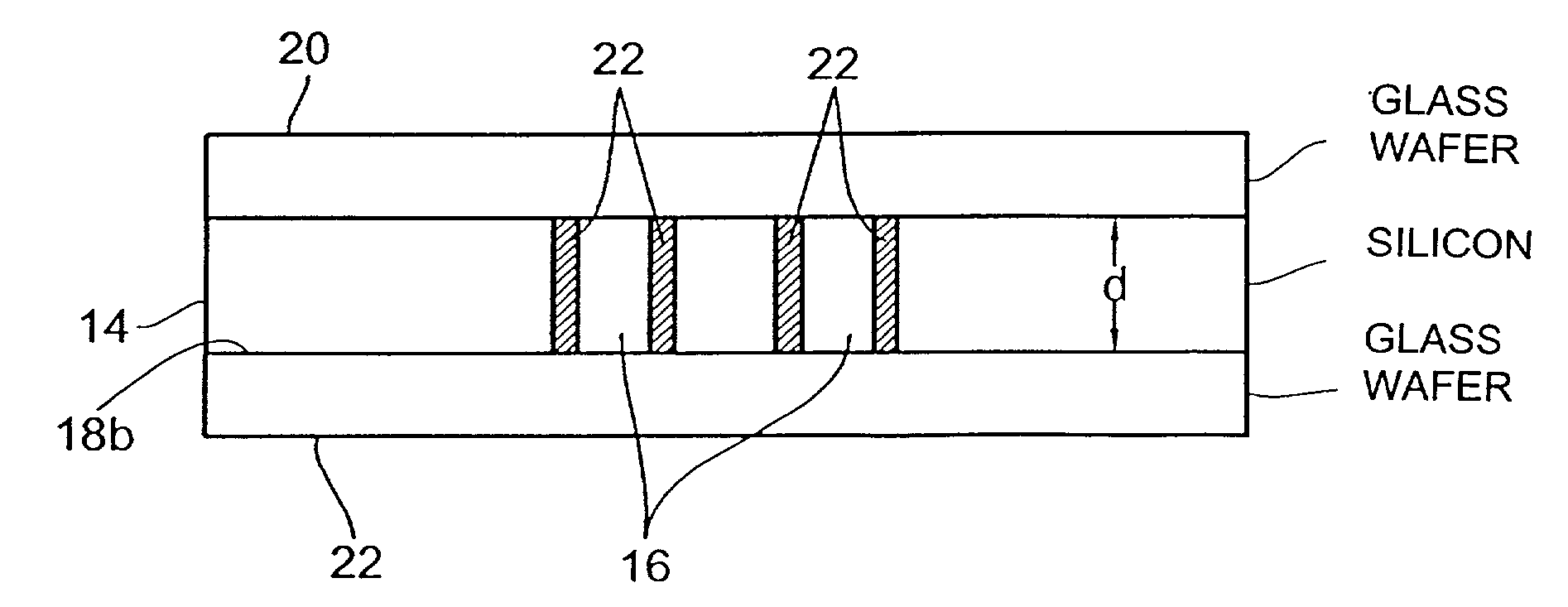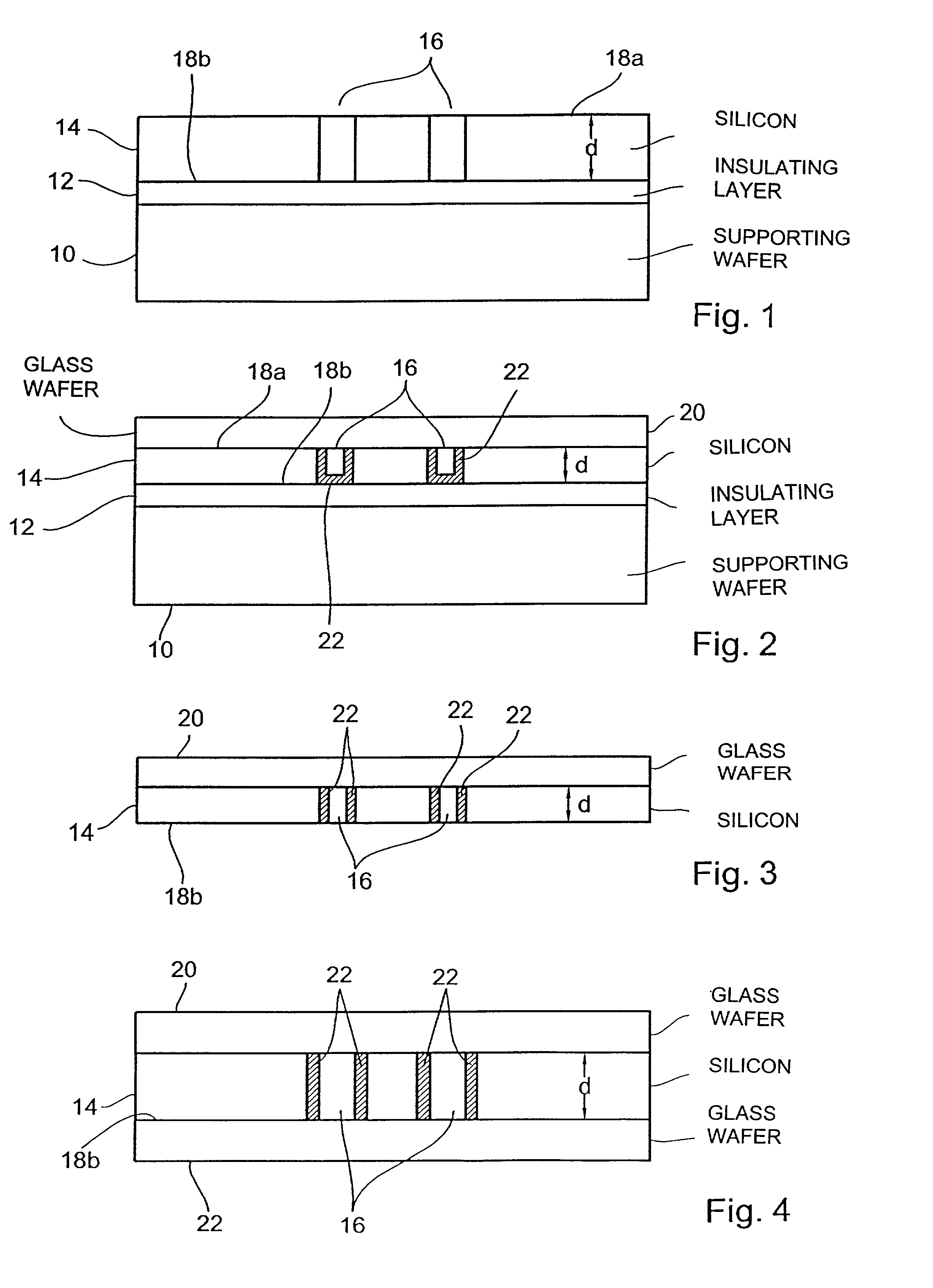Method for producing a fluid device, fluid device and analysis apparatus
a fluid device and analysis apparatus technology, applied in the field of analytical methods, can solve the problems of increasing the cost of the fluid device, difficult to adjust the precise depth of the fluid structure by means of etching methods, and inconvenient capillary paths for transmitted light analysis, etc., to achieve the effect of reducing the production cost per fluid device, high accuracy and precise active height of the fluid structur
- Summary
- Abstract
- Description
- Claims
- Application Information
AI Technical Summary
Benefits of technology
Problems solved by technology
Method used
Image
Examples
Embodiment Construction
[0028]FIG. 1 shows a basic wafer comprising a supporting wafer 10 having applied thereto an insulating layer 12 which is, in turn, covered by a semiconductor layer 14. An SOI structure is preferably used as a basic wafer, i.e. a structure in the case of which the semiconductor layer consists of silicon, the insulating layer consists of silicon oxide, and also the supporting wafer 10 is produced from silicon. In FIG. 1, a fluid structure 16 is already shown, which is preferably produced by dry etching the silicon layer 14. As known in the field of technology, a photoresist is applied to the semiconductor layer prior to the dry-etching step; this photoresist is then exposed at the locations at which the fluid structure 16 is to be created.
[0029]The present invention is also applicable to all supporting-structure / intermediate-layer / patterned-layer systems in the case of which the intermediate layer is of such a nature that it is essentially not impaired by a patterning process used for...
PUM
| Property | Measurement | Unit |
|---|---|---|
| height | aaaaa | aaaaa |
| thickness | aaaaa | aaaaa |
| transparent | aaaaa | aaaaa |
Abstract
Description
Claims
Application Information
 Login to View More
Login to View More - R&D
- Intellectual Property
- Life Sciences
- Materials
- Tech Scout
- Unparalleled Data Quality
- Higher Quality Content
- 60% Fewer Hallucinations
Browse by: Latest US Patents, China's latest patents, Technical Efficacy Thesaurus, Application Domain, Technology Topic, Popular Technical Reports.
© 2025 PatSnap. All rights reserved.Legal|Privacy policy|Modern Slavery Act Transparency Statement|Sitemap|About US| Contact US: help@patsnap.com


